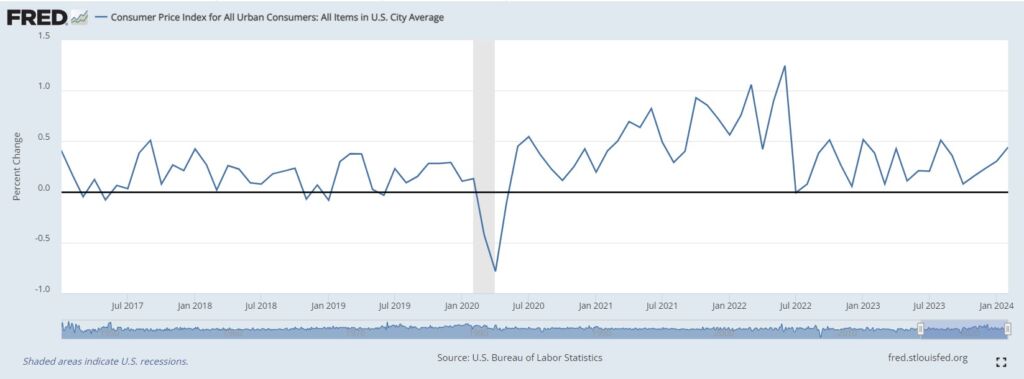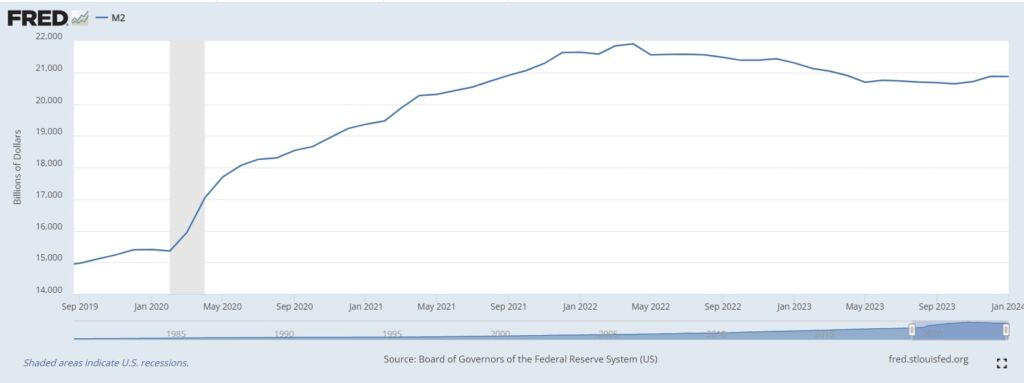The money supply stopped shrinking and inflation stopped falling
The Bureau of Labor Statistics (BLS) announced today that the Consumer Price Index (CPI) increased — the rate of inflation — by 0.4% in February. This is the fastest rate of inflation since last August and the monthly rate of inflation has been higher than in the preceding month in every month since October, as Figure 1 shows.
Figure 1

These numbers mean that the year on year rate of inflation — the annual rate you probably hear most often — has stopped falling. As Figure 2 shows, after peaking at 9.0% in June 2022, the annual rate of inflation plunged to 3.0% in June 2023. But since then that decline has stopped.
Figure 2

Back in June last year, I saw this fall in the inflation rate continuing. This was based on the observation that the surge in inflation had been driven by a massive expansion of the money supply on the M2 measure as the Federal Reserve printed money to keep the Treasury’s borrowing costs down during COVID-19. As the money supply shrank — M2 fell by 5.5% from its peak in April 2022 to May 2023 — so, too, would the rate of inflation.
But a funny thing happened. As Figure 3 shows, in June 2023 the decline in M2 stopped. Indeed, it has been more or less flat since then. Given this, we would expect to see a moderation in the deceleration of the inflation rate, which is exactly what we have seen.
Figure 3

Going into this election year, the Democrat’s strategy has seemed to be to tell Americans that they are wrong: They aren’t being squeezed, the economy is actually doing great. That might have had something going for it as the inflation rate plummeted in 2022-2023. If inflation remains stuck above the Federal Reserve’s 2.0% target and interest rates remain elevated to tackle it, it doesn’t look like such a smart play.